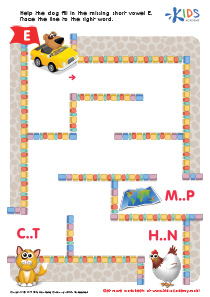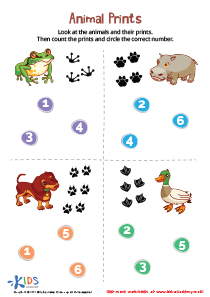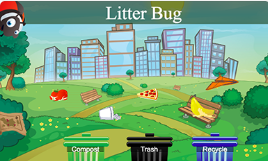Social Studies Lessons | Rules & Safety for 4-Year-Olds
5 results
Introducing our engaging Rules & Safety for 4-Year-Olds course, designed specifically for young learners. This interactive program combines captivating worksheets with educational videos and assessment quizzes to ensure a comprehensive understanding of safety principles. Tailored for the curious minds of 4-year-olds, our lessons focus on teaching essential rules and safety measures in a fun, age-appropriate manner. Through our carefully crafted content, children will learn the importance of following rules and how to stay safe in various situations. Empower your child with the knowledge they need to navigate their world securely with our Rules & Safety course.
When it comes to nurturing well-rounded, conscientious young learners, incorporating lessons on "Rules & Safety for 4-Year-Olds" into their educational journey can make a significant difference. These lessons, designed specifically for the curious minds of four-year-olds, blend interactive worksheets, engaging educational videos, and assessment quizzes to offer a comprehensive learning experience. Understanding the profound impact these lessons can have on children's studies and overall development is paramount.
Firstly, lessons on Rules & Safety for 4-Year-Olds play a critical role in instilling a sense of responsibility and awareness in young minds. At the tender age of four, children are at a pivotal stage of development; they are more receptive to learning new concepts and more adaptable to integrating essential life skills into their daily routines. By engaging with interactive worksheets, children are not just learning about safety in an abstract sense; they are actively participating in scenarios that teach them about real-world dangers and the importance of following rules. This hands-on approach ensures that the lessons learned are not only understood but retained, making them more cautious and informed individuals.
Educational videos complement these worksheets by providing visual and auditory stimuli that cater to different learning styles. For many children, especially the visual and auditory learners, these videos can transform abstract concepts into tangible, easily understandable lessons. The use of storytelling and characters that children can relate to or admire greatly enhances their ability to grasp complex topics such as crossing the street safely, the importance of wearing helmets, or why they shouldn't talk to strangers. These stories often leave a lasting impression, ingraining crucial safety rules in their young minds.
Furthermore, the incorporation of assessment quizzes at the end of these lessons serves a dual purpose. Firstly, it helps reinforce the information learned, ensuring that the key messages are understood and remembered. Secondly, it provides immediate feedback to both the children and their educators or parents about the child’s comprehension of the topic. This feedback loop is essential for identifying areas that may need further explanation or reinforcement, ensuring that no child is left behind in their understanding of rules and safety.



















